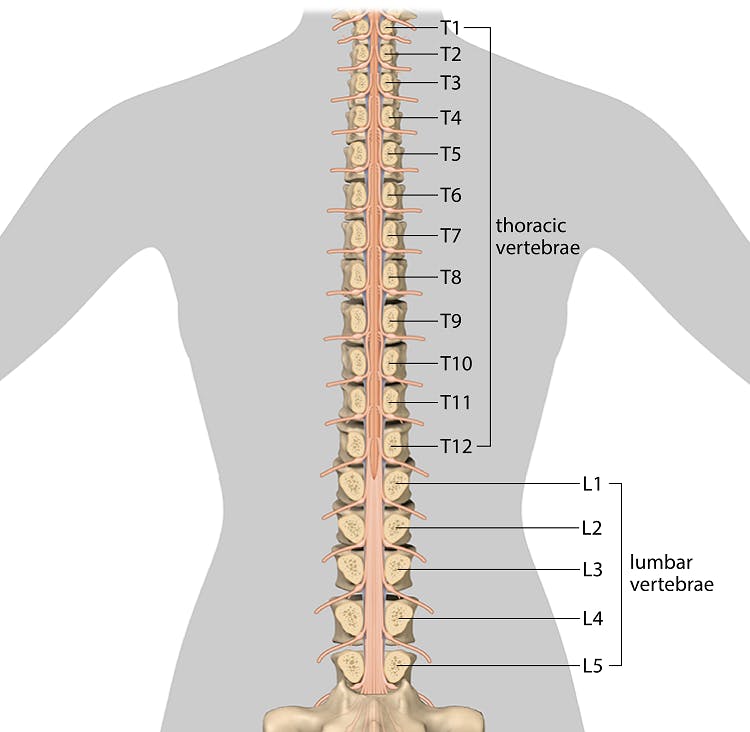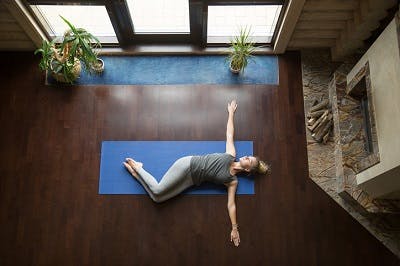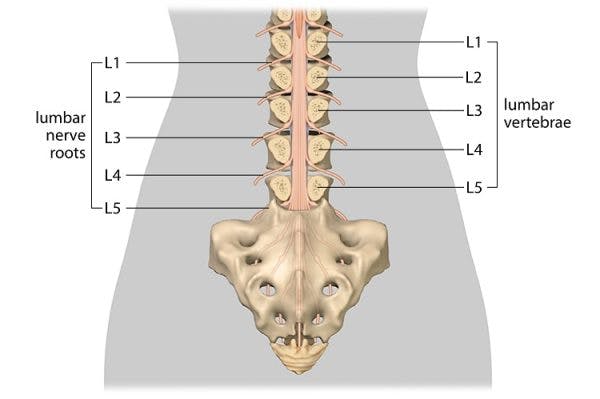Maintaining sitting balance can be challenging after a spinal cord injury but practicing targeted core exercises can alleviate some of the fatigue and improve your sitting endurance.
This article will share some effective seated and mat exercises to improve sitting balance after spinal cord injury. They can help strengthen your core, increase body awareness, and improve posture.
Before beginning a new exercise routine, be sure to talk to your healthcare provider to ensure safety in engaging with increased weight bearing activities because of the risk of fracture. Never attempt new exercises without proper clearance from your doctor or therapist.
Preparing for Balance Exercises After Spinal Cord Injury Patients

Sitting balance is the ability to sit upright and a skill learned early in life. After a cervical or thoracic spinal cord injury, maintaining sitting balance becomes difficult due to weakened and/or lost control over the core and leg muscles.
During your time with a physical and occupational therapist, you will learn ways to improve your balance after spinal cord injury by targeting the core and full-body. This time with your therapist is valuable but often limited. Therefore, it’s essential to keep up with your rehab exercise at home to keep the nervous system stimulated and promote recovery.
Before we dig into the mat and seated balance exercises for spinal cord injury, we’d like to share a few tips and tricks:
- Work out in front of a mirror: Practicing exercises in front of a mirror provides great visual feedback to help with form and posture.
- Choose a firm surface: Practicing the seated and mat exercises on a firmer surface like your wheelchair or a yoga mat on the ground rather than a sofa/bed will help create extra stability.
- Be mindful of skin problems: Be careful with all your transfers on and off equipment and look for areas that could cause friction, pressure, or shearing. Be mindful of protecting and monitoring your skin throughout whatever exercise you choose to do.
- Be aware of autonomic dysreflexia: Be aware that certain stimulation, pressure, or tight clothing may lead to autonomic dysreflexia. This is a potentially life-threatening condition if not properly managed. This is why you must consulting with your therapist before beginning any new exercises.
Now that you’re prepared to make the most of your balance exercises, let’s dig into some way to engage your core and improve stability.
Sitting Balance Exercises for Spinal Cord Injury
Seated exercises require activation of core and abdominal muscles; usually thoracic level spinal cord injuries and below. Please speak with your healthcare provider to see if these exercises are appropriate for your level of injury.
1. Trunk rotation
For a simple balance exercise, actively reach in various directions while seated. Be sure to maintain core engagement and trunk balance throughout exercise while you reach forward, rotating side-to-side, and in circles.
If you’re doing this exercise with a friend, have them move around you with their hand out and tap it with your right hand, left hand, or both hands.
To get creative, number some sticky notes 1-12 and place it in the order of a clock. Tap the sticky notes in order, backwards, only odds, only even, etc. Start with a small diameter clock and get progressively bigger for a greater challenge.
2. Trunk flexion, extension, side bend
While seated with core engagement (belly button pulled toward spine), lean down to the side and forwards and backwards. Safely reach towards the floor while keeping bottom planted in seat.
To add more challenge when your therapist agrees that you’re ready and safe, try adding a weight in your hands or adding a small exercise ball between mid- and low-back. This will add extra instability during training to help develop your sitting balance after spinal cord injury.
During the exercise, add an extra foam pad on your seat to create instability further challenging core and abdominal muscles.
3. Seated Marching (L3 SCI and below)

An L3 spinal cord injury refers to an injury near the base of the spine which typically results in paraplegia. A great balance exercise for paraplegia is seated marching, because it mainly involves the legs while keeping the core engaged.
To perform this exercise, start seated with core engagement (belly button pulled toward spine) with your feet flat on the floor. Lift one leg from the ground and place it back down, then repeat on the other leg like you are marching.
Maintain an upright position without moving upper body to increase spinal stability. For extra challenge, cross your arms across your chest.
Seated marching is one of the 40 exercises included in FitMi home therapy, an interactive rehab device that spinal cord injury survivors can use at home. These exercises are designed by physical therapists to help survivors regain balance and mobility in a fun, engaging way.
Mat Exercises for Spinal Cord Injury
Mat exercises require activation of core/abdominal and some leg muscles. These exercises are usually appropriate for thoracic level injuries and below, but please speak with your healthcare provider to see if these exercises are appropriate for your level of injury.
4. Pelvic Tilt (T6 and below)
This mat exercise is generally appropriate for spinal cord injuries at the T6 level and below.
Start by lying on a mat with your knees bent so that your feet are flat on a stable surface. Roll your hip back while drawing your belly button towards your spine. Keep your back flat and core engaged while slowly moving arms up overhead. Try to keep your arms straight and raise them until your hands are above your head. For extra challenge, add some weight in your hands.
5. Pelvic Tilt with Marching (L3 and below)
This balance exercise is generally appropriate for T3 SCI and below.
Start with your back flat against the mat, knees bent, and feet flat on the ground. Your legs should be making a 90 degree angle. Then, while maintaining the same bend in the knee, lift your leg partially up toward the chest and alternate legs. Try to initiate the movement from your core to help promote better balance.
6. Half Spinal Rotation (T1-12 spinal cord injury)
Start by lying on your side with your shoulders stacked on top of each other and your legs also stacked on top of each other. Keep a 90 degree bend in your legs, and reach your arms straight out in front of you. While keeping your arms straight, twist your body open while moving your top arm across your body and try to touch the other side of the mat with the back of your hand.
7. Full Spinal Rotation (L1 spinal cord injury and below)

Lying on your back with your knees bent (in the same position as the previous exercise), gently rotate your spine as you move your knees to the side. Keep your knees glued together and at a 90 degree angle as you move from side to side through a comfortable range of motion.
8. Plank on elbows and knees (T1 spinal cord injury and below)
For this mat exercise, start lying face down. Then, do a modified plank by lifting your body up onto your elbows and knees while doing your best to maintain a straight spine.
9. Side plank on knees
Start by lying on your side with your knees bent at 90 degrees and stacked on top of each other. Your thigh should be flush against the ground. Prop yourself up on your forearm so that your elbow is directly under your shoulder. Then, lift your body up into a modified side plank and maintain a straight spine.
Safely Getting Started with Balance Exercises for Spinal Cord Injury
Dealing with prolonged sitting after a spinal cord injury can be arduous, but incorporating some core and sitting balance exercises can be helpful in training up the endurance of your muscles to provide greater stability during everyday activities.
Be sure to take great care not to attempt exercises that are too difficult for your level of spinal cord injury by checking with your therapist to make sure the exercises are suitable for you.











